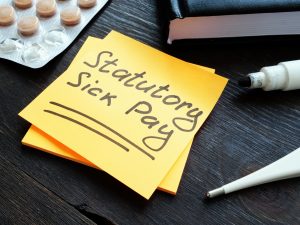When it comes to selling a property that has been your cherished home, you want to ensure you make the most of any available tax relief. That’s where Principal Private Residence Relief (PPR) comes into play. PPR is a valuable tax relief that can exempt a portion, or even 100%, of the gain made on the sale of your primary residence. However, navigating the intricacies of PPR can be a daunting task.
In this comprehensive guide, we’ll break down the complexities of PPR in a friendly and accessible manner. Whether you’re a homeowner, property investor, or simply interested in understanding property tax benefits, this article will provide you with the insights you need.
We’ll delve into the nuances of what constitutes a ‘residence’ according to the legislation and explore the three key factors that determine eligibility for PPR: quantity of occupation, quality of occupation, and intention to stay. Through real-life case examples and expert analysis, we’ll illustrate how these factors influence your ability to claim PPR and maximize your tax savings.
Understanding the duration and permanence of your occupancy, the significance of your presence and activities within the dwelling, and the importance of your intentions will empower you to make informed decisions regarding your property and potential tax relief.
Furthermore, we’ll provide practical tips on gathering the necessary evidence to support your PPR claim. As each case is unique, understanding the specific requirements and preparing your documentation accordingly can make a significant difference when it comes to successfully claiming PPR.
By the end of this guide, you’ll have a clear understanding of the pitfalls and planning points surrounding PPR, ensuring you don’t miss out on this valuable tax relief. Whether you’re considering selling your current home or are a property investor seeking to optimize your tax strategy, this article will equip you with the knowledge needed to make informed decisions.
So, let’s dive in and unlock the secrets to maximizing your property tax benefits through a comprehensive understanding of Principal Private Residence Relief.
Quantity of Occupation
The quantity of occupation refers to the duration of time the taxpayer has lived in the dwelling. While it is a factor, it is not the most significant one. Although living in the house for an extended period is important for establishing habitual residence, it is possible to claim PPR even with as little as two weeks of occupancy. However, it’s worth noting that some taxpayers have resided in their homes for several months without being able to secure PPR.
In cases where there has been a brief or transitory residence, a clear degree of permanence needs to be established, even within a short period. The shorter the time spent in the house, the higher the degree of permanence required to qualify for PPR. As stated by Millett J in the case of Moore v Thompson, occasional and short residence can still be considered a residence, but the determination is based on the specific facts and degree of residence.
For example, in the case of Morgan v HMRC [2013] UKFTT 181 (TC), a young man purchased a property for himself and his fiancée. However, when their relationship ended before moving in together, he moved into the property alone. Despite living there for only two weeks before considering letting it out, he was able to secure main residence relief due to the significant degree of permanence established during his initial occupancy.
Quality of Occupation
The quality of occupation refers to how strongly the taxpayer has lived in the dwelling. While this factor is important, it is not the most critical one. The quality of occupation is determined by the frequency and extent to which the taxpayer uses the dwelling.
A sufficient quality of occupation would involve using the house as a home, including activities such as sleeping, cooking, eating, entertaining guests, performing household chores like laundry and gardening, and generally spending a considerable amount of time in the property. Additionally, personalizing the house by moving in furniture and decorating it to the taxpayer’s taste would also contribute positively to the quality of occupation.
On the other hand, merely using the house for sleeping while conducting all other activities elsewhere would not meet the quality requirements for PPR. In the case of Wade Llewellyn [2013] UKFTT 323 (TC), it was determined that moving into a property with only a sleeping bag and performing all other activities elsewhere did not demonstrate sufficient quality for PPR.
It’s important to note that even with a combination of high quality and quantity of occupation, if the property is actively on the market for sale or rent, it becomes challenging to claim PPR. In the case of Bradley v HMRC [2013] UKFTT 131 (TC), although the taxpayer had extensively occupied the property for eight months, including moving in furniture and redecorating, the fact that the property was listed for sale prevented the successful claim of PPR. The tribunal judge stated that the required degree of permanence for obtaining PPR could not be established when the property was actively being marketed.
Intention to Stay
Intention is the most critical factor among the three. Neither quantity nor quality alone, or even in combination, will suffice without the presence of intention. Intention refers to the taxpayer’s plan and desire to remain in the property for the foreseeable future, without any intention to sell or rent it.
It’s important to note that residence doesn’t have to be permanent, but there should be a sense of future permanence. Having a “for sale” or “to let” sign outside the property indicates a lack of intention and can hinder the claim for PPR. This happened in the case of of K Lo v HMRC [2018]
In the case of K Lo v HMRC [2018] UKFTT 605 (TC)
A foreign university student studying in London, purchased a property in the UK with a loan from her mother. While she didn’t reside in the property full time, she believed she had enough quality of occupation to justify claiming Principal Private Residence Relief (PPR). Additionally, she had owned the property throughout her university period, establishing a substantial quantity of occupation.
However, the loan agreement stipulated that the loan must be repaid after K Lo finished university. As she didn’t have any other capital to repay the loan except the house itself, it was clear that she would be required to sell the property to settle the loan debt.
This requirement to sell the house was deemed equivalent to having the property on the market from the very beginning. Consequently, the tribunal determined that K Lo had no intention to remain living in the house when she initially moved in. As a result, she was unable to claim PPR.
The case highlights the significance of intention as the most crucial factor when it comes to PPR. Even if there is a sufficient quantity and quality of occupation, if there is an intention to sell or rent the property in the foreseeable future, it can undermine the eligibility for PPR.
It serves as a cautionary tale for individuals who may be considering purchasing a property with the expectation of claiming PPR but have plans to sell it shortly after a specific event, such as completing their studies or a fixed period of time. Demonstrating a genuine intention to remain living in the property is essential for a successful PPR claim.
This case underscores the importance of carefully assessing one’s intentions and understanding the potential consequences on tax relief eligibility. Seeking professional advice and structuring property ownership and loan arrangements accordingly can help individuals navigate the complexities of PPR and ensure they make informed decisions regarding their property investments.
Interestingly, I was keen to learn why HMRC would choose to investigate this taxpayer as a summary of the findings could lead to concerns by many. The facts of the case are interesting insofar as the taxpayer’s mother bought a property at the same time nearby and helped finance her daughter’s property. Further, the extended family applied for planning for a property to be built in the garden. When this was refused the property was put up for sale. The appellant was an 18-year-old student living at halls of residence in Southampton. The property was in London and was in substantial disrepair and was then put up for sale at the same time as the mother’s property. It is likely HMRC were alerted by the planning application and substantial gain in a short period of time. It is therefore clear that HMRC will review in detail the facts to support the intention to live in a property with a degree of permanence.
Practical Tip
Every case is judged based on its specific facts. To ensure a successful PPR claim, make sure your intention to reside in the property has the required degree of permanence, along with the necessary quantity and quality. Keep evidence of these crucial factors to support your claim.
Remember, PPR can be a valuable relief, so understanding the nuances of what constitutes a ‘residence’ is essential.


